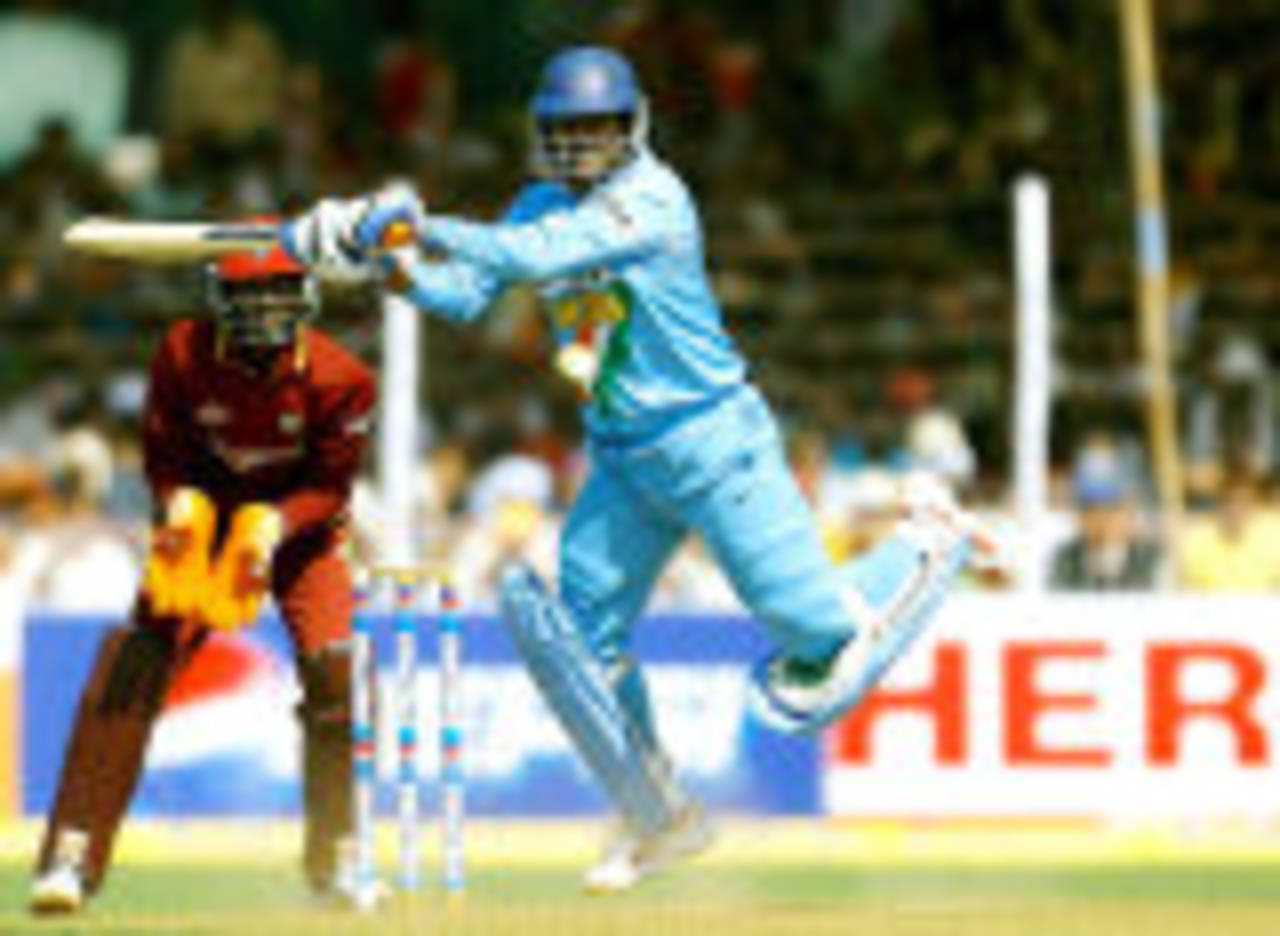How good is Mahendra Singh Dhoni?
Speaking for myself, I’ve swung between admiration and scepticism
Mukul Kesavan
25-Feb-2013

AFP
Speaking for myself, I’ve swung between admiration and scepticism. In the beginning, when Dhoni scored those two mammoth centuries, the 148 in Vishakapatnam and the 181 in Jaipur, I was taken by the confident brutality of his style but to score a lot of runs in one-day cricket on dead wickets against moderate opposition isn’t always a sign of exceptional talent.
What stood out from the beginning was Dhoni’s poise. He never looked the young debutant. He seemed to know what his business was and went about it with a self-possession that contrasted nicely with the violence of his methods. As a fan I know that spectators are drawn to Dhoni by the sense that this spectacular, risk-taking hero isn’t a death-and-glory kamikaze pilot like Kris Srikkanth used to be nor flamboyantly careless with a great batting gift as Kapil Dev was. Dhoni comes across as someone wholly in charge of his talent.
What order of talent is it? When he reprised his one-day 148 in the first Test against Pakistan in 2005-06 I began to wonder if he was a Gilchrist-sized gift to Indian cricket. All right, so it was a featherbed of a pitch and to put Dhoni’s century in perspective, Shahid Afridi got a bigger century in fewer balls, but a big hundred against the old enemy early in a Test career always seems a portent of good things. But after that high voltage start, Dhoni’s performances tailed off. There have been a couple of fifties along the way and a few starts but nothing out of the ordinary and his Test match average has stabilized at around thirty.
So were our expectations inflated? Dhoni’s record in Test is respectable. His average after fifteen Tests is just a fraction lower than Kunderan’s and Engineer’s, both of who finished their careers with averages in the low thirties. His main rival for the wicket-keeper batsman slot in the present team, Dinesh Karthik, has an average under twenty-five.
In an international context, Dhoni is clearly inferior as a Test batsman when you compare him to Kumar Sangakkara (who averages more than fifty runs per innings) or Gilchrist (who averages just under fifty). Set against his Pakistani counterpart, the talented Kamran Akmal, Dhoni does surprisingly well: he has a better Test average and is by some distance the better one day performer.
Adequate though Dhoni’s Test record is, his main claim on our attention as a batsman has been his one-day record. He scores at nearly a hundred runs per hundred balls and still has the staggering, Tendulkaresque average of forty-five. And while his two centuries against Pakistan and Sri Lanka came early in his career, there has been no falling off in his one day career, where he has regular racked up important fifties.
Does his record explain why Dhoni has captured the Indian imagination in the way he has?
Dhoni makes our collective pulse race not only because he’s aggressive, but because his aggression exhibits itself in shots I’ve never seen anyone else play. I can think of three right away. The first and least of them is the peculiar flip shot that he plays where he lays the bat face up on the pitch and tips the ball over his shoulder in the direction of long-leg. The second one is the forcing shot he plays square on the off side, with both feet off the ground, his legs scissoring to make momentum in mid-air. It’s a viscerally savage shot that besides violating every reasonable rule of batsmanship tries, in passing, to break the law of gravity. The third Dhoni special, is the strangest shot of all: when he’s served up a yorker or a near-yorker length delivery, he essays a two-handed top-spin forehand which is intended not just to dig out the ball but to whip it to the mid-wicket boundary. More often than not the shot doesn’t come off: its significance lies in his determination to invent a shot with which to attack the unplayable ball.
Dhoni’s an interesting batsman because his aggression is wholly based on improvisation. He plays like a pioneering backwoodsman who has had to invent batsmanship without instruction. In the best sense of that phrase, Dhoni’s technique is home-made. Sometimes this is frustrating: he often gets out playing eccentric shots when an ordinary drive or flick would do; nothing that Dhoni plays, in attack or defence, belongs to the orthodox repertoire. Allied to this improvisatory technique is a degree of premeditation unusual in cricket at the highest level. One of the reasons he does better in the shorter form of the game is that ODI bowling is more predictable and less various than bowling in Test cricket. Also, there’s more short-pitched bowling in Tests and some of his dismissals have raised a question mark about his technique against the short ball.
The reason I think Dhoni is potentially cut out for great things as a batsman, unlike, say, Afridi (who, by the way, has the better Test match record), is his willingness to subordinate aggression to a larger plan. Dhoni has shown an ability to choose his moment, to commit himself to percentage cricket, to coast on furious singles in a crisis, instead of careening, brake-less, on adrenalin. In India’s victory over Sri Lanka yesterday, he hit just four boundaries in his unbeaten sixty-six and still managed a strike rate of eighty-eight. An enthusiastic Hindi radio commentator compared his posture before assuming his stance to Bheem, shouldering his gada, or mace. Given the way he’s built, his rumoured appetite for gallons of milk and the size of that bat, I can see the resemblance. Part Bheem, part Eklavya—it isn’t hard to see why he’s got our attention.
A longer version of this post published in The Telegraph, Kolkata, is available here
Mukul Kesavan is a writer based in New Delhi